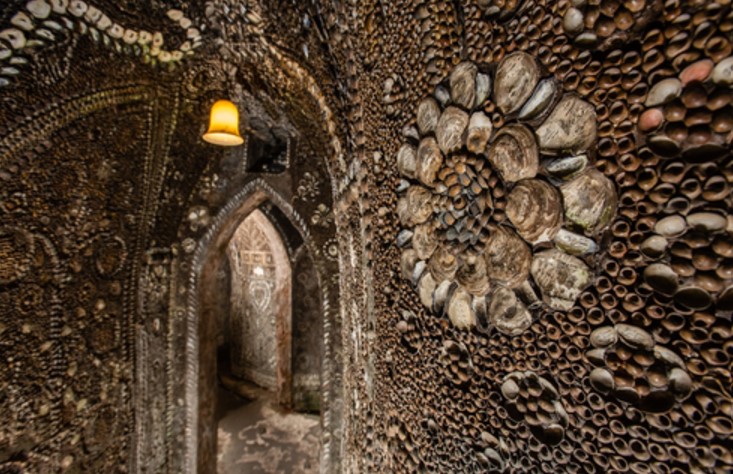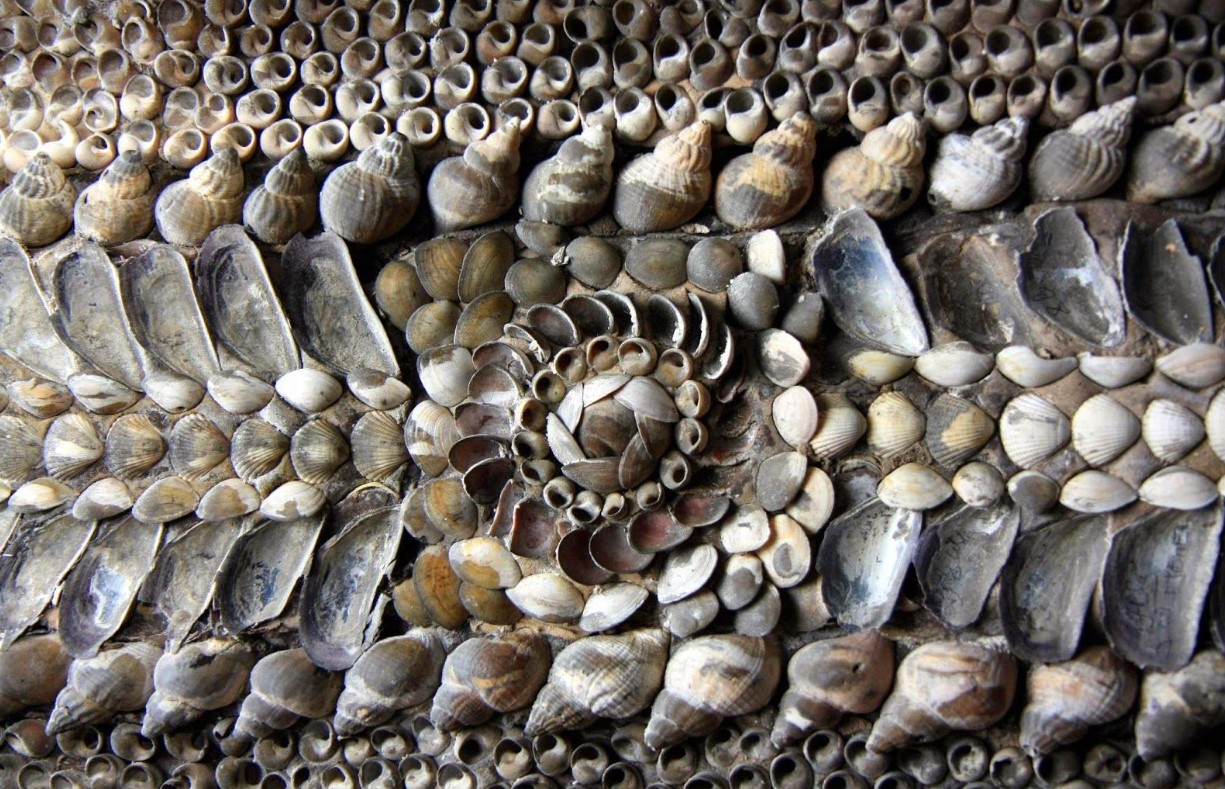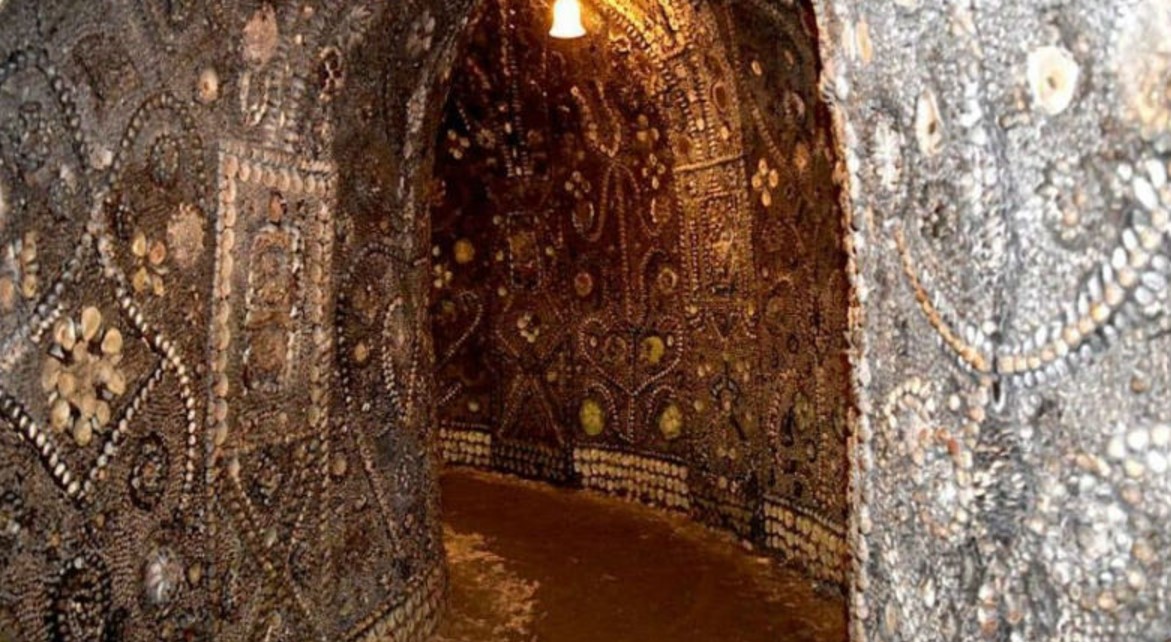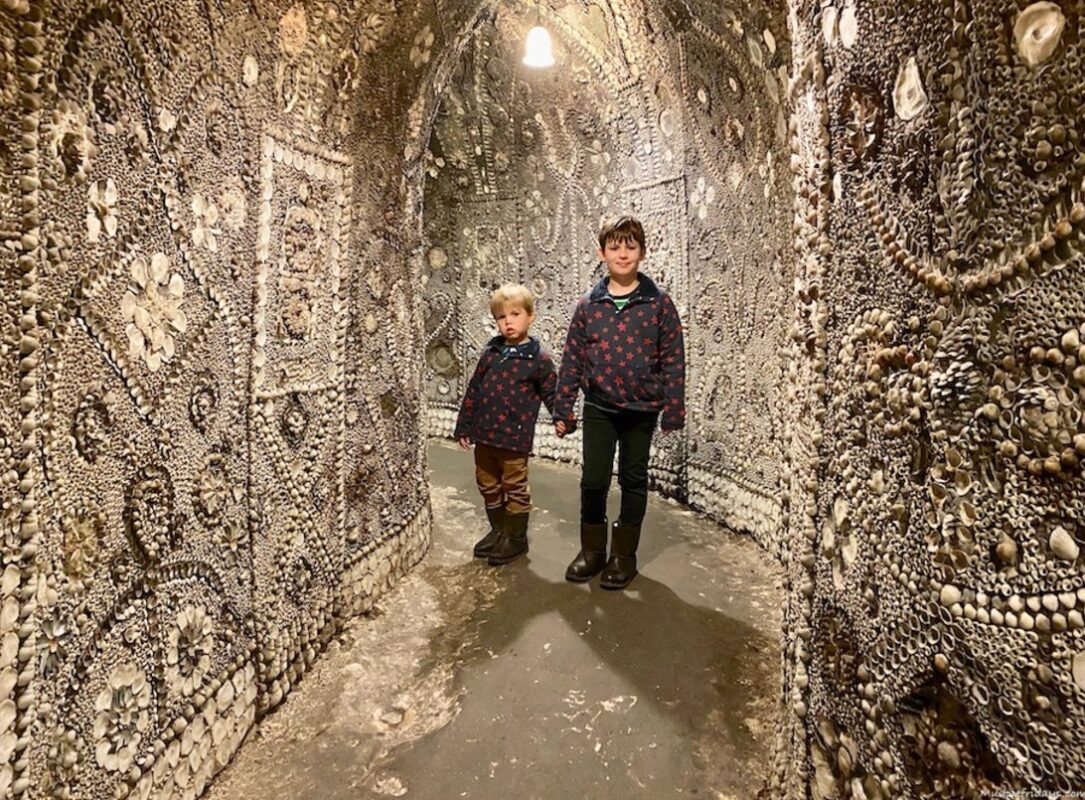Nestled beneath the streets of Margate, Kent, lies one of the most enigmatic historical sites in England—the Shell Grotto. Discovered in 1835, this underground passageway adorned with over 4.6 million shells remains an unsolved mystery. The intricate mosaics and elaborate designs of the grotto have fascinated visitors and researchers for nearly two centuries. Who built it, when, and for what purpose? These are the questions that continue to baffle experts and ignite the imaginations of all who explore its depths. Follow archeology.dulichvn.net to uncover these mysteries.
1. The Discovery of the Shell Grotto
The Shell Grotto was accidentally discovered in 1835 when a farmer was digging a duck pond and unearthed the entrance to this subterranean marvel.

1. A Hidden Underground Passage
Under the surface, explorers found a 70-foot-long tunnel leading to a central chamber and an altar room, all covered with intricate shell mosaics. Every inch of the grotto’s walls and ceilings is decorated, making it a spectacle of craftsmanship.
1.2. An Extraordinary Mosaic
The grotto’s design is truly mesmerizing, featuring symbols, geometric patterns, and depictions of objects and figures. Over 4.6 million shells, including oysters, mussels, cockles, and whelks, are arranged in a breathtaking display of artistic skill.
1.3. Open to the Public
After its discovery, the grotto quickly became a local sensation. By 1838, it was opened to the public, drawing curious visitors from across England who came to marvel at its beauty and ponder its mysterious origins.
2. Theories Surrounding Its Origins
Despite years of research, the origins of the Shell Grotto remain unknown. Numerous theories attempt to explain its purpose and the identity of its creators.

2.1. An Ancient Temple?
Some believe the grotto dates back to ancient times, possibly built by the Romans or Phoenicians as a sacred temple. The symbolic designs could represent spiritual or celestial beliefs, with the altar room serving as a site for rituals.
2.2. A Medieval Construction?
Others suggest the grotto might have been built during the medieval period as a secret meeting place for a religious sect or society. The cryptic symbols and the hidden nature of the site lend credibility to this theory.
2.3. A More Recent Creation?
Some historians argue that the Shell Grotto could be a whimsical creation from the 18th or 19th century. Perhaps it was the work of an eccentric artist or aristocrat seeking to create an elaborate underground retreat or art project.
3. The Mystery of the Grotto
What makes the Shell Grotto truly fascinating is the abundance of unanswered questions surrounding its existence.

3.1. Who Built It?
No records or documentation exist to explain who constructed the grotto. Theories range from ancient civilizations to secret societies, yet no definitive evidence has been found to confirm any of these ideas.
3.2. When Was It Built?
Estimates of the grotte’s age vary widely. Carbon dating of the shells is inconclusive, as the materials could have been collected long before their use in the mosaics. Some researchers argue it could be thousands of years old, while others believe it’s a relatively modern creation.
3.3. Why Was It Created?
The purpose of the grotto is equally mysterious. Was it a place of worship, a meeting space for a hidden society, or simply a decorative folly? The lack of inscriptions or textual clues adds to the intrigue, leaving its true function a matter of speculation.
4. Visiting the Shell Grotto
Today, the Shell Grotto is a popular tourist attraction, offering visitors a chance to step into one of England’s most unique and mysterious landmarks.

4.1. A Journey Underground
Entering the grotto feels like stepping into another world. The dimly lit passageways and shimmering mosaics create an otherworldly atmosphere that leaves visitors awestruck.
4.2. A Museum of Mystery
The site also features a museum and gift shop where visitors can learn about the grotto’s history, explore its many theories, and purchase souvenirs inspired by its designs.
4.3. A Testament to Human Creativity
Whether ancient or modern, the Shell Grotto stands as a testament to the skill and creativity of its creators. Its intricate designs and mysterious origins continue to inspire wonder and curiosity.
Conclusion
The Shell Grotto in Margate is more than just an underground marvel—it’s a puzzle that defies explanation. Its intricate mosaics, enigmatic origins, and hidden purpose make it one of history’s most compelling mysteries. Whether it was a temple, a meeting place, or an eccentric art project, the grotto captivates all who visit, reminding us of the power of human creativity and the enduring allure of the unknown. As you walk its shell-lined halls, you can’t help but wonder: who created this masterpiece, and why? Perhaps the true answer lies just out of reach, waiting to be discovered by future generations.

CÁC TIN KHÁC
Mark Twain & Olivia Langdon: A 36-Year Love Story Filled with Laughter and Devotion
The Tollund Man: A 2,400-Year-Old Mystery Preserved in a Danish Bog
Skara Brae: Scotland’s Hidden Neolithic Village
Porta Nigra: The Hidden Depths of Trier’s Iconic Roman Gate